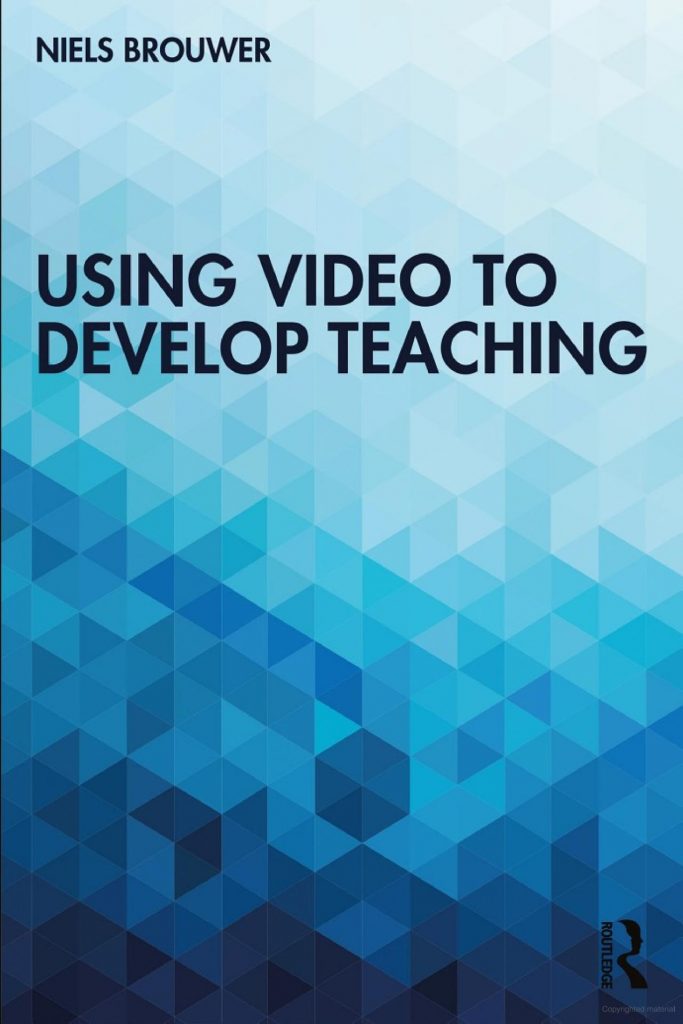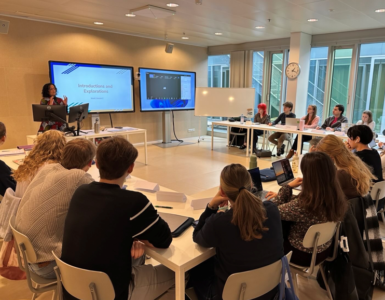By Niels Brouwer, Scholing voor Leraren, the Netherlands.
Video use has been part of the teacher education landscape since the 1960s, when it was developed as a medium for training instructional skills in the Microteaching Clinic at Stanford University. However, since video has gone digital, new opportunities for raising the quality of teaching and learning have come within reach. I define as “visual teacher learning” (VTL) all forms of competence development in which teachers use digital video (DV) records of their interaction with learners and content in order to improve their instruction.

My new book Using Video to Develop Teaching provides an overview of VTL and synthesises what is known about instructional improvements that teachers can achieve by engaging in it. Based on extensive literature reviews and empirical research the book explains not only how using DV can help teachers raise the quality of their instruction, but also how such change benefits pupils’ learning and behaviour. The book concludes with practical resources for practitioners incorporating the lessons drawn from theory and research (see the companion web site).
The potential of VTL is that it encourages higher-order teaching and learning. This means that it helps teachers activate learners in cognitive as well as social-emotional respects, leading them to learn with understanding, in contrast to passive, reproductive learning. The advantages of analog video (AV) were already that the realism of moving images helps teachers attend to the interplay between teaching and learning. Also, because of its concreteness, video entails domain specificity of observations. In addition, it enables repeated analysis from different perspectives without the need for immediate action. Finally, it invokes vicarious experience and emotional engagement in the viewer. DV revolutionises these properties because it has introduced three new affordances. It distinguishes itself from AV not only by its increased affordability, but especially by the host of versatile ways in which it can be used. Not only training institutions, but also individual professionals nowadays have access to hardware and software which enable them (1) to view, edit and annotate video footage while having the events practically at their fingertips, (2) to embed video material in hypermedia and (3) to communicate about it with colleagues anytime anywhere. Interactive video or hypervideo (HV) integrates these affordances in one interface (see www.ivideo.education). Hybrid applications, such as Iris Connect and MyTeachingPartner combine the best of personal and virtual worlds.
As yet, little research is available about the benefits of applying newer technologies such as 3600 video, AR and VR to teacher learning, but perhaps even more important are mobile uses – also because of their applicability in low-income countries. Facilitating VTL by means of mobile apps could make teachers’ professional learning collaborative in the widest sense, in short truly “glocal”.
Editor’s note: We are delighted to have Niels as one of our speakers for the Media & Learning 2022 Conference on 2-3 June in Leuven, Belgium. He will be giving a talk entitled “Visual Teacher Learning, a promising strategy to develop teaching“.

Author
Niels Brouwer, Scholing voor Leraren, the Netherlands.














